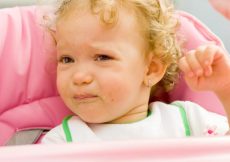According to the Centers for Disease Control and Prevention (CDC), car accidents are a leading cause of death amongst children in the US. However, these deaths can be prevented if parents take certain safety measures while riding in a car with children onboard.
One of these safety measures is to let children sit on the back seat of the car buckled up. The back seat is safer than the front seat for young children during cases of road accidents. This is because the pressure from an inflated airbag in the front seat can lead to severe injuries and even death in young children.
If you have the question, “When can a kid sit in the front seat?” and wonder when’s the right age to transition your children from the back seat to the front seat, read on as we give you the answer and a few safety tips.
When Can A Child Sit In The Front Seat?
According to the American Academy of Pediatrics, the Department of Transportation (DOT), and the National Transportation Safety Board (NTSB), all children weighing below 65 pounds or aged below 13 years should be seated in the back seat of the car. Experts at AAP further advise delaying the transition from the rear seat to the front seat for as long as possible.
Risks For Children Sitting In The Front Seat
According to Stanford Children’s Health, the following are the risks associated with children sitting in the front seat of a car.
- In crashes, the airbags inflate at less than 1/20th of a second and move at speeds of up to 200mph. The force from these airbags can kill, decapitate, or cause several head injuries in children sitting in the front seat.
- As children tend to scoot up in their seats and sit closer to the dashboards, the airbags do not have enough space to inflate fully before reaching the child.
- Children are light in weight, and therefore, an inflated airbag may lift them off their seats and cause them to hit their heads on the car’s ceiling or dome light.
- The DOT states that children riding in the front seat have succumbed to airbag injuries even in low-speed car crashes.
Age-Specific Car Safety Regulations In The USA
Choosing the correct car seat and keeping the children buckled up are crucial to their safety. It is vital to choose a car seat appropriate for the child’s weight, height, and age. The CDC offers the following recommendations.
1. Rear-facing car seat
- Infants and toddlers must be seated in a rear-facing car seat for the best possible protection.
- The car seat must be fixed in the rear seat, preferably in the middle of the back seat, as it is the safest place.
- Continue to use the rear-facing car seat until the baby’s height and weight are within the allowed limits mentioned on the car seat label.
2. Forward-facing car seat
- Once children have outgrown the rear-facing car seat, transition them to a forward-facing car seat.
- The forward-facing car seat should be used until the child’s height and weight are within the allowed limits mentioned on the label of the car seat.
3. Booster seat
- Once the child outgrows the forward-facing car seat, they should be made to sit in a belt-positioning booster seat.
- The booster seat should be placed in the back seat.
- The seat belt fits properly when the lap belt lays across the upper thighs (not the stomach), and the shoulder belt is across the chest (not the neck).
4. Seat belt
- Once the children grow to a weight and height where the seat belt fits them accurately, they do not need a booster seat.
- In most cases, the seat belt properly fits children when they are about four feet nine inches tall and are aged between nine and 12 years.
- Each vehicle can have a different seat belt fitting, so check that it fits your child.
Tips For Driving With Children In The Front Seat
Take the following precautions when a child above 13 years is seated in the front passenger seat:
- Children should always wear seat belts.
- Ask them to sit with their backs and bottoms well rested on the seats, as they often tend to scoot up and sit near the dashboard.
- Lead by example, and do not drive rashly or under the influence of alcohol, etc.
- Do not break any traffic rules as children learn from what they see you doing.
Ensure optimal safety of children and adolescents of all ages during any form of travel as car accidents are always sudden and may have grave consequences. This involves letting young children sit on the back seat, as it is proven to be safer than the front seats.
Try to avoid the transition from the back seat to the front seat for as long as possible, and not until your child is 13. Even after your children transition to the front seat, make sure they follow all the safety precautions at all times.
References:
MomJunction’s articles are written after analyzing the research works of expert authors and institutions. Our references consist of resources established by authorities in their respective fields. You can learn more about the authenticity of the information we present in our editorial policy.
Recommended Articles
The following two tabs change content below.




































